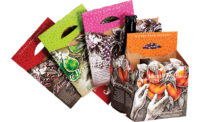Brand Packaging: Sports Branding
Baseball and the Art of Design
How a “minor” league team’s mascot and branding are making a major impact.












This past spring Major League Baseball (MLB) changed its famous logo of the iconic silhouetted batter. The ubiquitous logo was originally designed by Jerry Dior in the late 1960s and has remained largely untouched. The press release announcing the logo refresh mentioned “… taking a very deep dive at the evolution of the logo.” That deep dive resulted in two of the logo’s three colors being darkened a few shades. The red background changed from a firetruck hue to a deeper brick color. The royal blue was now navy blue. The silhouetted batter remained white. In the end, the league made a major deal about a minor change.
While MLB played it safe with its 50-year-old unchanged design, the collegiate leagues are embracing irreverent, well-designed logos, mascots and brand merchandise. And they’re including fans in the process. In 2013, the Kenosha, Wisconsin, team that plays in the Northwoods League (a collegiate summer baseball league) needed a name. So, the league turned to the fans. Residents of Kenosha submitted suggestions for the team’s name, and the winning suggestion, The Kenosha Kingfish, was revealed at the team’s launch party.
Steve Schmitt, owner of the Kenosha Kingfish (Schmitt also owns the Wisconsin Rapids Rafters and the Green Bay Bullfrogs), turned to Shine United, a creative agency out of Madison, to bring the Kingfish to life. “One mandate Steve Schmitt had was that the mascot had to be directly tied to baseball,” said Shine United principal, VP and creative director John Krull.
Keeping that mandate in mind, Krull began the task by “establishing the theme, voice and tone for the team and the theme was simple: a love of baseball.” The tone and voice needed to be both inclusive and irreverent. In other words, this Kingfish had to embody a party-loving, Kenosha proud, superfan. But first, the mascot needed a name. Krull and team decided that Elvis — yes, that’s a nod to the original King, Elvis Presley — was the logical (and marketable) choice.
“When it came to selecting team colors we looked at other teams in the league and decided that we didn’t want to do blue or green,” said Krull. “Instead we decided to use bright American colors with gold because he’s the king.” When asked how Elvis is directly tied to baseball, Krull replied, “If you look closely at the gills on Elvis, they double as baseball threads, which directly tie the design to baseball.”
After the mascot was finalized, the agency needed to build awareness for the new team. “We created posters with humorous copy to get the fans excited about opening day,” said Krull.
Using simple and bold typography, the posters were created to resemble vintage travel advertisement. But instead of being seduced into exploring Italy, fans were encouraged to “Redline your fun meter,” “Spend quality time with a hot dog” and “Become best friends with Mr. and Mrs. Brewski.” The invitation established the tone for the new team by focusing on the social aspects of the game. In other words, locals knew this would be more than a baseball game — it would be entertaining.
And entertaining it is. Fans of all ages can’t get enough of Elvis, who runs down from the left field foul pole to deliver the ball for the first pitch at home games. Colleen Ryan, a retired Milwaukee librarian, and her husband Mark, travel 80 miles to watch their favorite team — and every trip includes a purchase or two from the team’s gift shop. Her collection of Kingfish shirts always draws attention back home. “Neighbors always ask me about them, and I’m happy to spread the word. We’re very enthusiastic Kingfish fans,” Ryan said.
A large part of the appeal of minor league teams is the amusing approach to branding. Collegiate teams have the ability to bring people together with humorous storytelling and a dose of hometown pride, in order to create a collective game-time experience.
What these teams understand is that they are in the entertainment business as well as the baseball business. And a well-designed endearingly outlandish mascot makes baseball very entertaining.
Looking for a reprint of this article?
From high-res PDFs to custom plaques, order your copy today!












